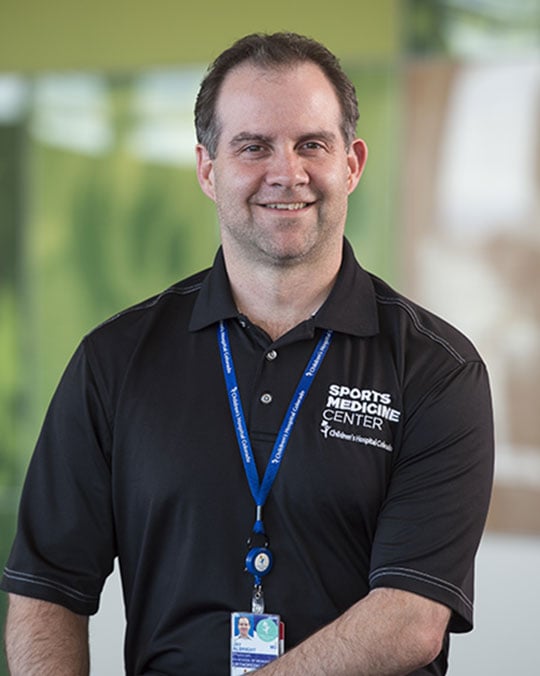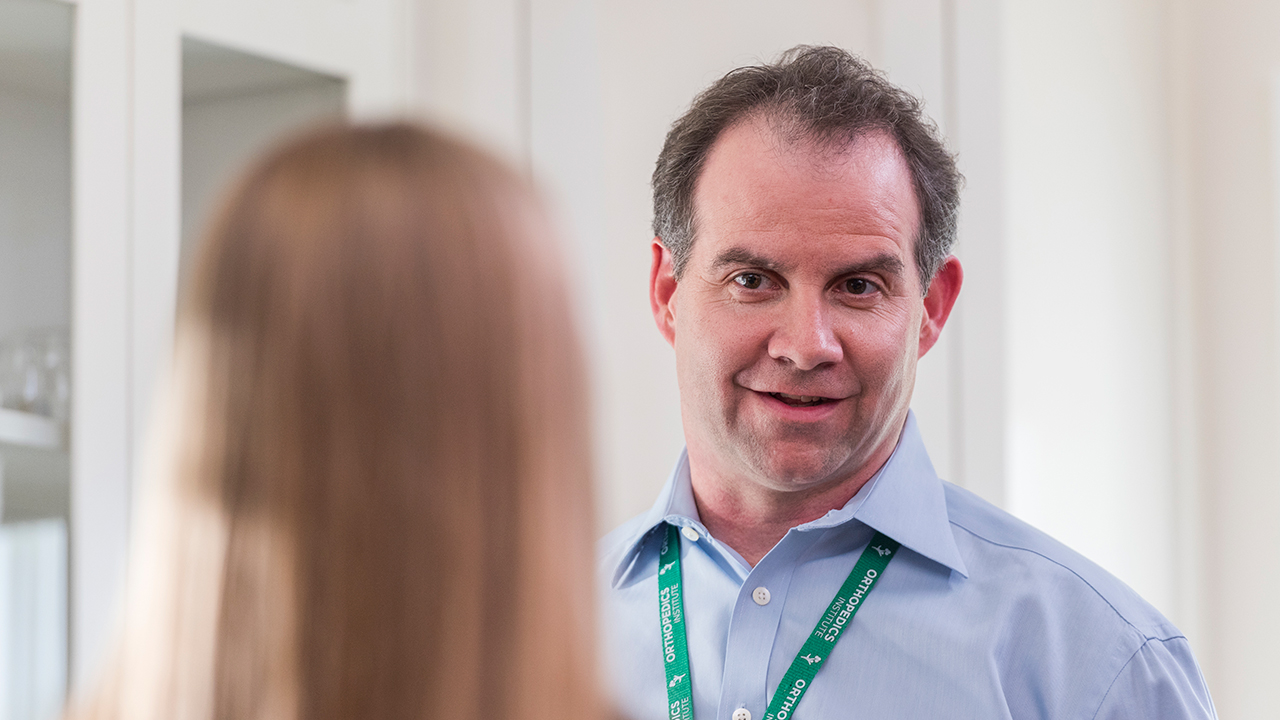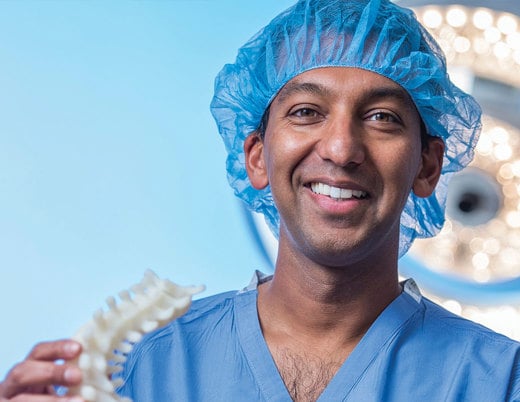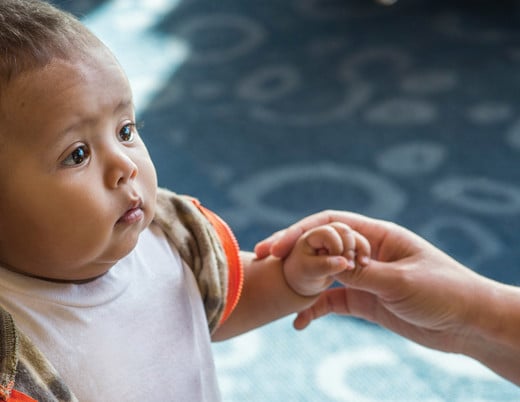Could an alternative graft for ACL reconstruction in kids help reduce the risk of retear?
In the late 2000s, preliminary research established a link between anterior cruciate ligament, or ACL, injuries in young athletes and hamstring power — particularly in young women. In athletes who experienced an ACL injury, researchers found the hamstring wasn’t firing in the right pattern or with the right strength.
That ACL and hamstring strength connection was concerning for pediatric orthopedic surgeon Jay Albright, MD, because the standard of care for ACL reconstruction in adolescents was to use a hamstring graft. Based on that research, what was supposed to be a fix might ultimately be increasing a young athlete’s risk of tearing their reconstructed ACL.
An alternative graft for ACL reconstruction
To find a suitable alternative, Dr. Albright conducted a lengthy review of literature on the grafts used for ACL reconstruction in adults. He landed on the quadriceps graft — a piece of bone from the kneecap along with the attaching tendon. The outcomes in adults were equivalent to that of other grafts, but it had never been used in high numbers or for skeletally immature adolescents.
For adults, the surgical technique is for the bone of the ACL graft to cross where the growth plate formerly would have been for the femur or the tibia. That would work for adolescents who were skeletally mature or pretty close. So in 2007, Dr. Albright began testing the quadriceps tendon graft with that group to establish safety. He subsequently modified the technique for younger patients.
“For the skeletally immature, we place the bone portion of the graft below the growth plate of the femur a safe distance so that the only thing crossing the growth plate is the soft tissue of the graft on the tibia, if anything,” says Dr. Albright.
In kids as young as 7 or 8 years old, the graft doesn’t cross the growth plate at all. That technique was developed by the late orthopedic surgeon Allen F. Anderson, MD, one of Dr. Albright’s mentors.
“From what we’ve been able to find, we’ve had zero growth arrests,” Dr. Albright says.
Lowest ACL retear rate
Now 13 years later, many pediatric orthopedic surgeons across the country use the quadriceps tendon method for ACL repair in adolescents: Rady Children’s Hospital, Children’s Hospital Los Angeles, Boston Children’s Hospital, Children’s Hospital of Philadelphia — to name a few. But circumventing the growth plate isn’t the method’s only allure.
“Our patient-reported outcomes are high, and our research shows the retear rate is significantly better — between 1% and 4%,” says Dr. Albright, “which is the lowest that’s in the literature for adolescents and pediatric ACL surgery patients with an adult-type graft.”
He’s performed the surgery over 1,000 times and has had between 40 and 50 retears over the last six or seven years. It’s why he’s been asked to give numerous national talks on the method. In fact, it’s catching on so quickly, he recorded a video of the way his team harvests the graft, prepares and reconstructs it, and he shares that video on Google Drive for colleagues who want to learn how the technique is performed at Children’s Hospital Colorado.
Working to lower the retear rate
Though the retear rate is impressive, Dr. Albright and his team are determined to reduce it even further.
In Europe, France in particular, surgeons add an anterior lateral ligament, or ALL, reconstruction to all ACL surgeries, which may give the patient more stability. But it’s more surgery and it may overconstrain the knee.
“There are probably some patients where that’s a good idea, like those with loose ligaments, but maybe not for all patients,” he says. “I think where we need to go next is trying to work out how to identify patients who are at greater risk for retear. If we can identify a commonality, maybe we can better understand if adding the ALL would reduce that risk.”
Featured Researchers

Jay Albright, MD
Surgical Director of Sports Medicine
The Orthopedics Institute
Children's Hospital Colorado
Associate professor
Orthopedics
University of Colorado School of Medicine





 720-777-0123
720-777-0123










